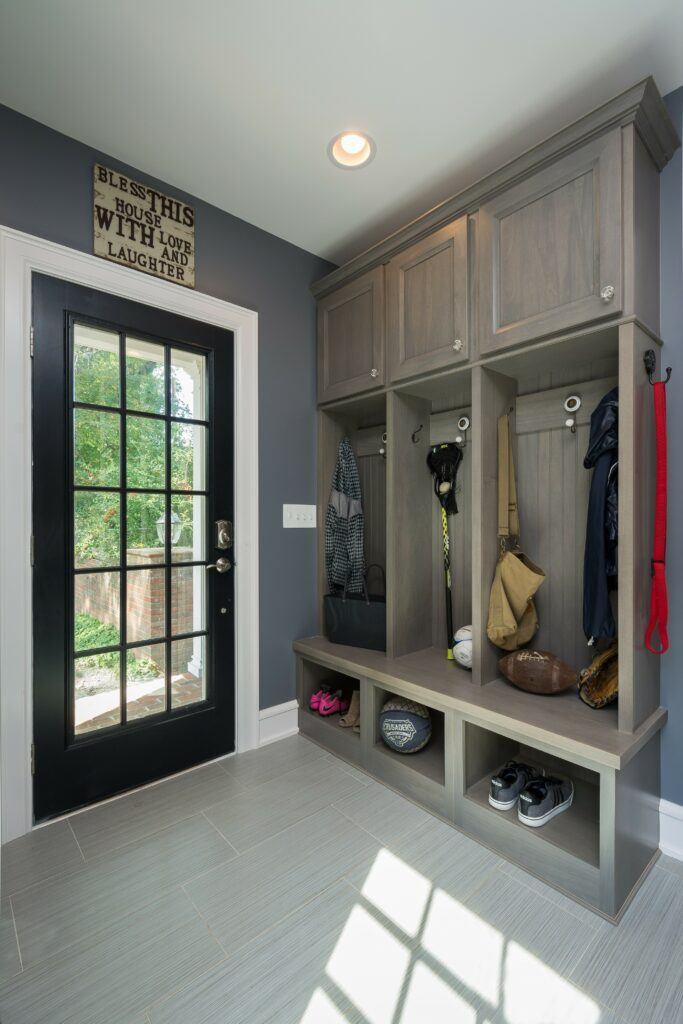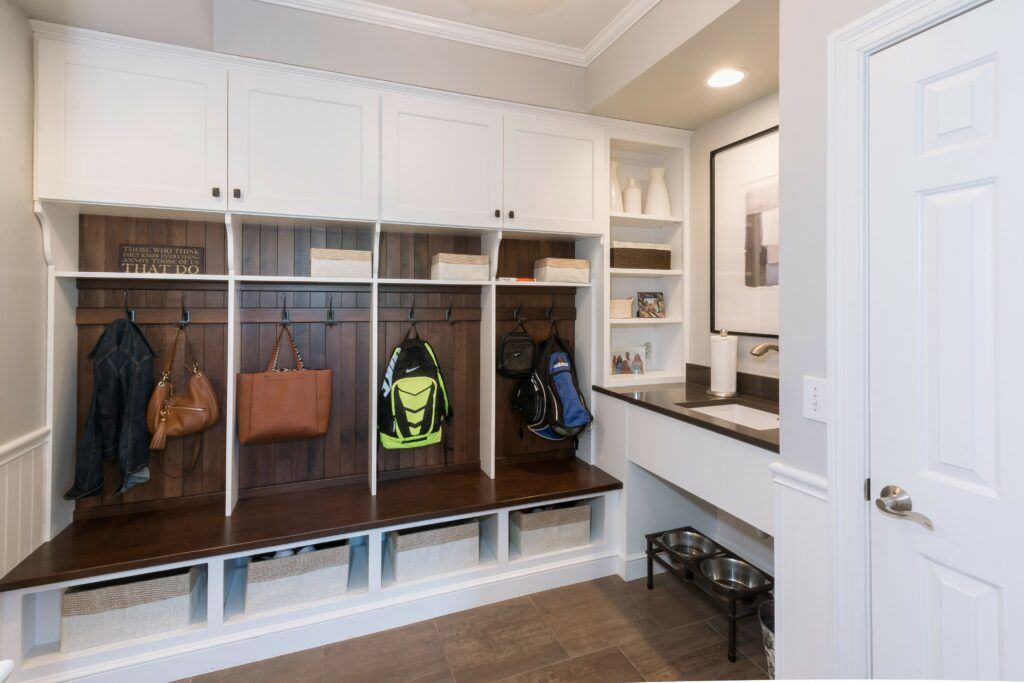How to create a functional mudroom
Why devote space to a mudroom?
In every busy household there is a spot, that easy convenient spot, where everyone in the family dumps what they were carrying and wearing when they came in the door. In most homes, shoes and bags end up in the kitchen. Maybe mail lands at the end of the dinette table or the corner of the counter. Backpacks, shoes, coats, and shopping bags are shrugged off and dropped inside the door. Their owners forgetting their good intentions to return and pick them up later, instead only coming back in haste when it’s time to leave the house again. Foraging through the pile for what items are theirs and then rushing out the door. Good design accommodates human nature instead of fighting it. This is why many clients need a mudroom, to provide an organized and contained space right inside the main family entrance for outerwear, pack packs and briefcases, sporting equipment, and other clutter.

Designing a mudroom.
When designing a functional mudroom for our clients, the J.S. Brown & Co. team always starts with the household itself. How many are in the family (including pets)? What door is the primary entrance and exit for the family? Will this room have any other functions, such as laundry, pantry, or a family desk area? Then we move to considering what types of organizing systems will work best. For instance, most parents tell us their children do better with open areas. They are more likely to hang their coat on a hook, then to open a closet door and pull down a hanger. Knowing that, we often include a shallow bench area, which is helpful for pulling off boots. Separating the space into individual “cubbies” means each family member gets their own dedicated space. Some drawers or cabinet storage can be handy for storing hats, scarves, and gloves. Other features to consider including are key hooks, charging stations with extra outlets for cell phones and tablets, a broom closet for cleaning suppliers, built in trash can, a utility sink, family calendar and chalkboard for notes, and racks for sporting equipment. After laying out the space, consider materials and surfaces. Porcelain tile in a medium – dark color is a favorite choice for the floor. It is durable, easy to clean, and if you select your pattern carefully, can be very good at camouflaging a little dirt here and there. Try to make sure any cabinetry is of a nice hard wood species with a durable finish. Thermofoil finishes can also be a good choice for the budget minded. Many mudrooms have a tile or bead board wainscot since these materials are a little tougher than drywall and can withstand more abuse.

Finally, consider the four-footed family members!
We design many of our mudrooms for pets as well. Imagine having a space for wiping off a wet dog, housing food and water dishes, storage for pet food, maybe room for a dog crate, or a cat box. We have even designed a “dog shower” for clients who had a creek running through their property and dogs who liked to run through the creek. A utility sink can be helpful for refilling dishes or cleaning muddy paws.
